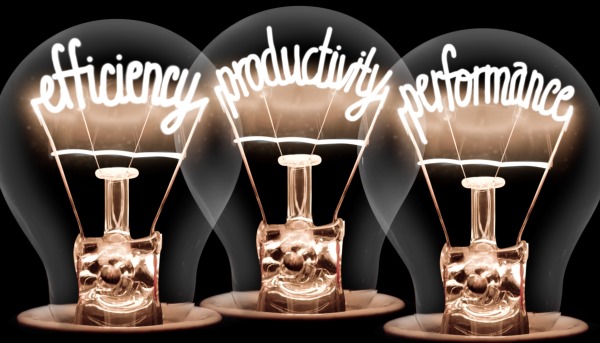Tech virtual assistants have become integral members of many business teams, providing essential support services such as administrative tasks, customer service, social media management, and data entry. As technology continues to advance, the role of virtual assistants has evolved to include specialised skills like web development, SEO optimisation, and software programming. With the growing reliance on virtual assistance, it’s crucial for clients and virtual assistants to establish a solid foundation of trust, communication, and understanding.
By dedicating time to review progress, address concerns, and align objectives, clients and virtual assistants can heighten their collaborative success. In this article, we’ll explore the significance of regular check-ins with tech virtual assistants and offer practical tips for making them effective.
The Benefits of Regular Check-Ins
Improved Communication
Improved communication is a significant advantage of regular check-ins. By touching base frequently, clients and virtual assistants can ensure they are on the same page, discussing tasks, goals, and progress. This helps to prevent misunderstandings and miscommunications that can lead to mistakes, missed deadlines, or decreased productivity. Open communication also promotes transparency, enabling both parties to voice their concerns, share ideas, and align their efforts towards common objectives.
Increased Productivity
Regular check-ins can also increase productivity by identifying opportunities for the virtual assistant to take on more responsibilities or provide additional support. As the virtual assistant becomes more familiar with the client’s business, they may be able to suggest new ways to streamline processes, automate tasks, or tackle larger projects. By delegating more tasks, the client can free up time to focus on high-priority tasks, while the virtual assistant can grow their skillset and contribute more value to the partnership.
Better Time Management
Better time management is another benefit of regular check-ins. When both parties communicate effectively, they can set clear expectations and priorities, optimising their schedules and workload. Clients can allocate tasks according to the virtual assistant’s strengths and availability, while virtual assistants can manage their time more efficiently, balancing multiple projects and meeting deadlines. This leads to increased efficiency, reduced stress, and improved work-life balance.
Enhanced Trust and Accountability
Lastly, frequent check-ins foster enhanced trust and accountability. When both parties engage in regular communication, they develop a deeper understanding of each other’s needs, preferences, and work styles. This builds mutual respect and responsibility, creating a stronger working relationship. Clients can rely on their virtual assistants to complete tasks accurately and efficiently, while virtual assistants feel valued and motivated to deliver high-quality work. Trust and accountability are essential for long-term collaboration and are reinforced through consistent, open communication.
Types of Feedback to Discuss During Check-Ins
 Task-Related Feedback
Task-Related Feedback
Task-related feedback is an essential aspect of regular check-ins. During these meetings, clients should evaluate the quality and timeliness of completed tasks, discuss any challenges faced by the virtual assistant, and set goals for future assignments. This type of feedback enables clients to assess whether the virtual assistant is meeting their expectations and provides an opportunity to address any issues promptly. It also allows virtual assistants to understand what is expected of them and how they can improve their performance.
Communication Feedback
Effective communication is critical to the success of any collaboration, and regular check-ins provide an ideal opportunity to assess the effectiveness of communication channels, response times, and message clarity. Clients and virtual assistants should discuss any communication breakdowns, unclear instructions, or misunderstandings and work together to find solutions. By improving communication, both parties can avoid errors, reduce frustration, and enhance their working relationship.
Performance Feedback
Performance feedback is another vital component of regular check-ins. Clients should provide input on the virtual assistant’s overall performance, highlighting their strengths and areas for improvement. This feedback helps virtual assistants understand where they excel, and which areas require further development. Additionally, clients and virtual assistants can set development goals, enabling the virtual assistant to acquire new skills and knowledge, increasing their value to the team.
Job Satisfaction Feedback
Finally, job satisfaction feedback is crucial to the well-being and longevity of the virtual assistant. During regular check-ins, clients should solicit feedback from the virtual assistant regarding their job satisfaction, address any concerns, and make adjustments as needed. This demonstrates that the client values the virtual assistant’s contributions and is committed to ensuring their happiness and success. Happy virtual assistants are more likely to remain engaged, motivated, and productive, benefiting both parties involved.
Best Practices for Giving and Receiving Feedback
 When giving feedback, it’s important to be specific, objective, and actionable. This means providing concrete examples of what was done well and what could be improved, rather than generalisations or assumptions. The sandwich method is a helpful technique, where you start with positive comments, followed by constructive criticism, and end with encouragement and support. This approach helps the virtual assistant feel valued and motivated to make improvements.
When giving feedback, it’s important to be specific, objective, and actionable. This means providing concrete examples of what was done well and what could be improved, rather than generalisations or assumptions. The sandwich method is a helpful technique, where you start with positive comments, followed by constructive criticism, and end with encouragement and support. This approach helps the virtual assistant feel valued and motivated to make improvements.
During check-ins, active listening is crucial. Give the virtual assistant your full attention, ask questions to clarify their perspective, and verify your understanding of their feedback. This shows that you value their input and are committed to finding solutions together.
In summary, regular check-ins and feedback are essential for both clients and virtual assistants to achieve their goals and build a successful collaboration. By recapping the benefits of regular check-ins and emphasising the importance of maintaining open lines of communication, we can create a culture of continuous improvement. This culture fosters growth, productivity, and job satisfaction, ultimately leading to a thriving partnership.

